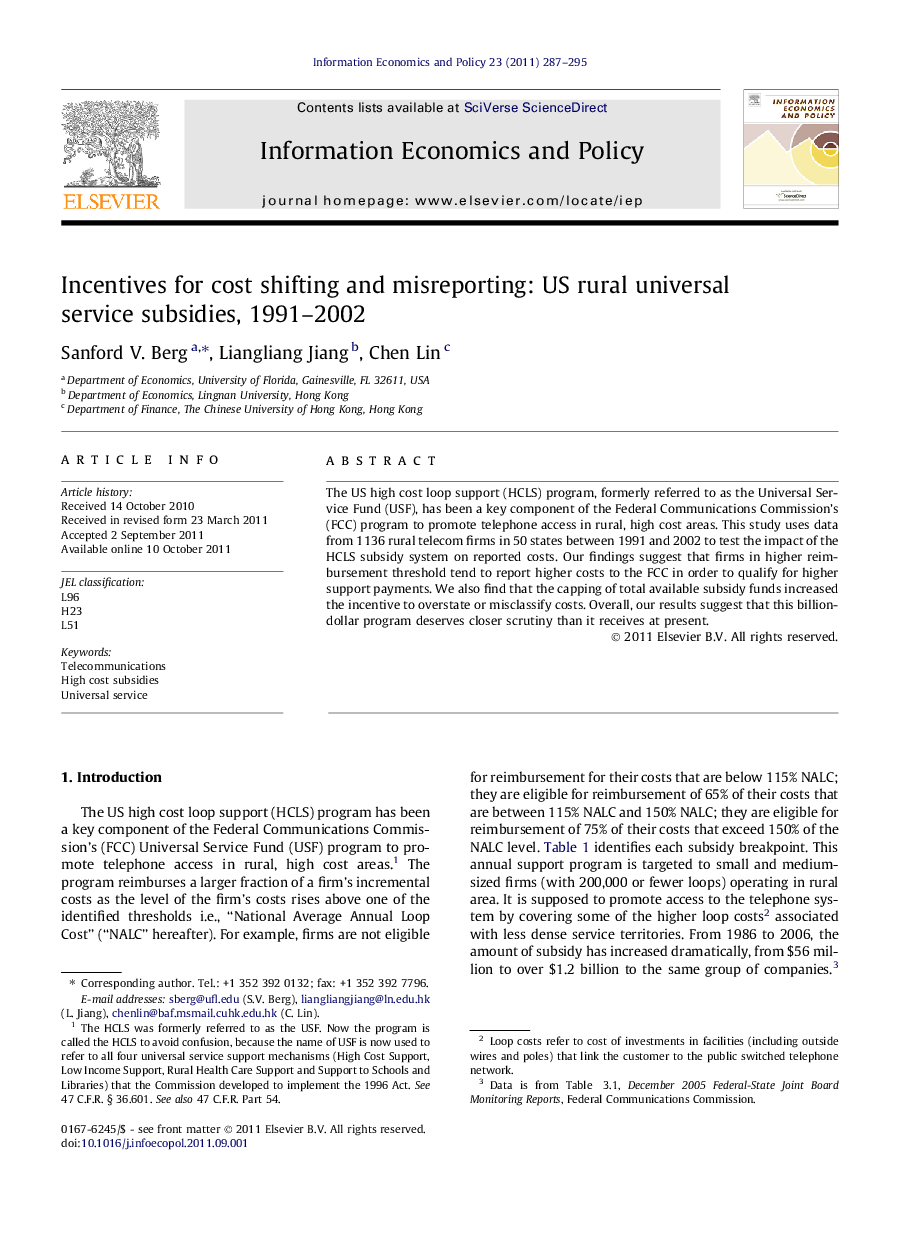| Article ID | Journal | Published Year | Pages | File Type |
|---|---|---|---|---|
| 5075751 | Information Economics and Policy | 2011 | 9 Pages |
The US high cost loop support (HCLS) program, formerly referred to as the Universal Service Fund (USF), has been a key component of the Federal Communications Commission's (FCC) program to promote telephone access in rural, high cost areas. This study uses data from 1136 rural telecom firms in 50 states between 1991 and 2002 to test the impact of the HCLS subsidy system on reported costs. Our findings suggest that firms in higher reimbursement threshold tend to report higher costs to the FCC in order to qualify for higher support payments. We also find that the capping of total available subsidy funds increased the incentive to overstate or misclassify costs. Overall, our results suggest that this billion-dollar program deserves closer scrutiny than it receives at present.
⺠The study uses data from 1136 rural telecom firms in 50 states (1991 and 2002). ⺠The model tests the impact of the high cost loop support (HCLS) subsidy system on reported costs. ⺠Firms in higher reimbursement thresholds report higher costs to the FCC, qualifying for higher support payments. ⺠Capping available subsidy funds increased the incentive to overstate or misclassify costs. ⺠This billion-dollar program deserves closer scrutiny than it receives at present.
